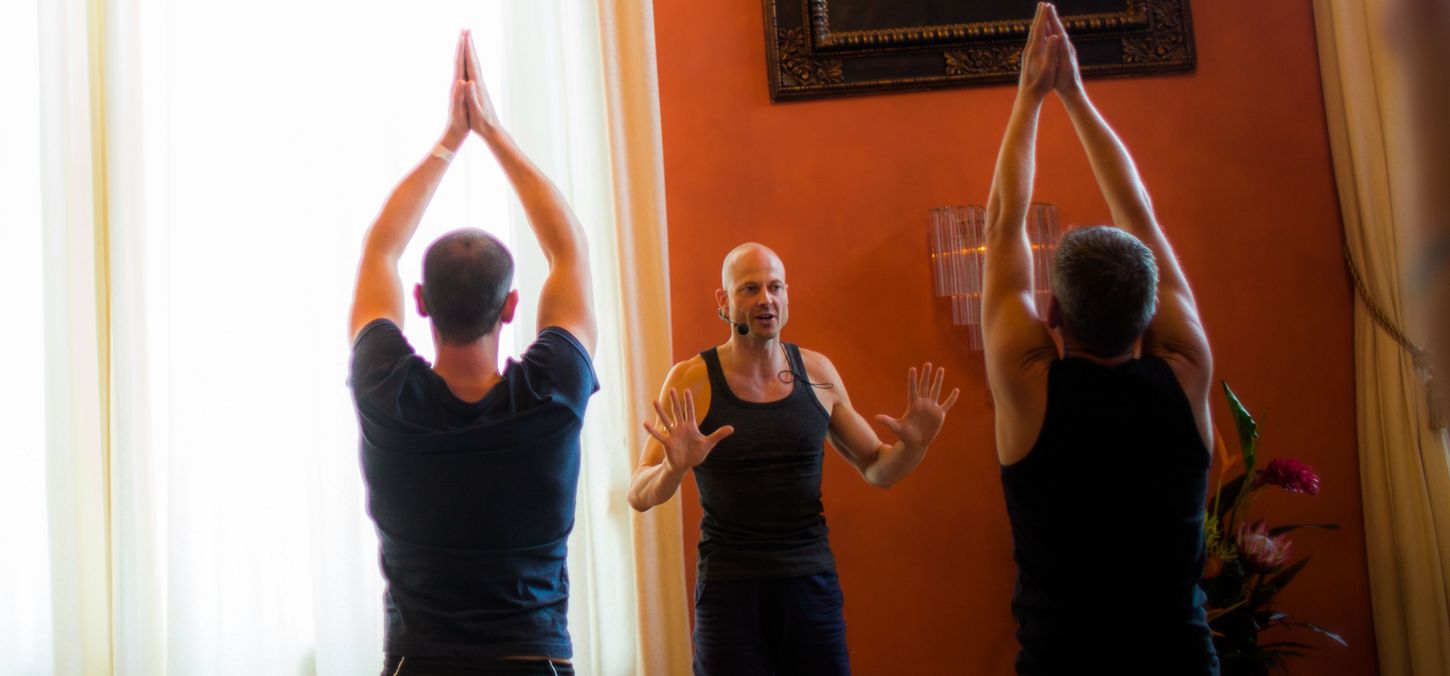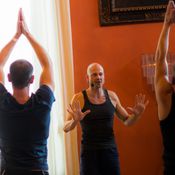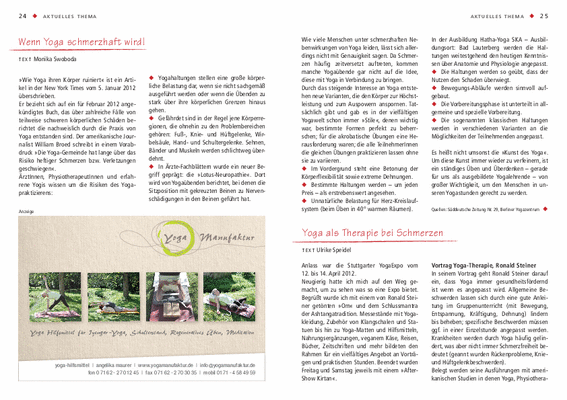
On the occasion of YogaExpo 2012, I went to Stuttgart from 12 to 14 April 2012. I left home, curious to see what would be on offer at such an exposition. I was welcomed by an »om« sounded by Ronald Steiner and the finishing mantra of the ashtanga tradition. This was complemented by stalls with yoga clothes, all kinds of equipment and accessories from singing bowls and statues to yoga mats and tools, nutritional supplements, vegan cheese, traveling, books, magazines, and much more setting the frame for a comprehensive and diverse offer of talks and practical classes. On both Friday and Saturday, the day ended with an »after-show kirtan«.
Ronald Steiner on yoga therapy
In his talk, Ronald Steiner points out that yoga always has a health-promoting effect when it is adapted to practitioners' individual needs. In general, common ailments and conditions can be alleviated or cured in group practice (e.g. by movement, relaxation, strengthening and stretching) with a qualified teacher. Specific conditions, in contrast, may have to be tackled in individual classes. Illnesses are frequently alleviated by yoga; however this does not always mean complete freedom from pain (the examples given were back problems as well as problems with the knee and hip joint). Ronald Steiner proved his point by citing American studies comparing the effects of yoga, physiotherapy and self-practice with the help of a book. The effects were measured after 4 and 26 weeks. The best long-term results were achieved with yoga, followed by self-practice with a book. After four weeks, physiotherapy showed almost the same results as yoga, but after 26 weeks the initial success of the treatment had practically vanished.
Illness > Processing > Suffering
Suffering is the result of negative attitudes, a negative belief. In order to prevent suffering, the attitude towards the illness has to change. This is the starting point for a cure, for a focus on the essence or core of the self. Yoga as persistent – daily – practice helps to reach a more positive attitude and feeling. If you make an effort every day, change is possible. Help comes from the inside, never from the outside. The knowledge of and about one's own body improves and the expectation to be able to change something increases.
- Optimism can be learned. The positive aspects will then find an expression.
- Your mental focus is on what is still possible or will be possible, not on what is restricted or limited.
- The core of the self is divine, healthy, full of life, good and whole... In the yoga belief system, humans learn more and more about the core and thus the divine in them is expressed better and better. The core »floods the body«.
- Listen to your own breath. The breath is the link between the material and the immaterial world.
Experiencing the self – the (true and divine) core – without prejudices allows to become free from prejudice (vrittis), free from suffering and independent of the body. Then, a clear vision without any projections becomes possible.
Author





